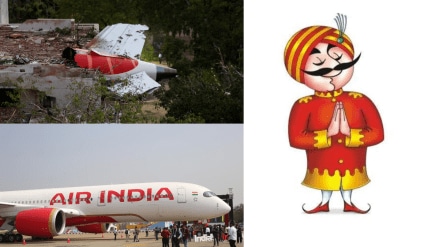On October 15, 1932, J.R.D. Tata piloted a single-engine De Havilland Puss Moth from Karachi to Bombay, carrying 25 kilograms of mail. The aircraft made a refuelling stop in Ahmedabad, where the fuel was delivered by bullock cart. That historic journey marked the beginning of what would become India’s flag carrier, Air India.
Almost a century later, the same Ahmedabad became the site of a tragic milestone. On 12 June 2025, a Boeing 787 Dreamliner operating under Air India crashed en route to London, killing 241 of 242 people on board. The incident, now under investigation, is a fatal crash involving that aircraft model and has brought renewed scrutiny to the airline’s safety protocols during a critical period of transformation.
Where it all began
Founded in 1932 as Tata Airlines, the company began with modest resources: two aircraft, three pilots, and three mechanics. By 1938, it had added routes to Delhi and Colombo, and by the early 1940s, it had supported the Allied war effort by transporting troops and supplies.
In 1946, the airline became a public limited company named Air India. Two years later, it launched international services, becoming the first Asian airline to operate transcontinental flights between Bombay, Cairo, Geneva, and London. These early years established a reputation for premium service and technical excellence. The airline entered the jet age in 1960 with the Boeing 707 and became the world’s first all-jet airline by 1962.
Nationalisation and decline
In 1953, the Government of India nationalised Air India, aiming to consolidate control over key industries. Though J.R.D. Tata remained chairman until 1977, and decision-making shifted to bureaucrats, leading to declining efficiency and underinvestment. The 2007 merger with Indian Airlines, intended to streamline operations, instead added complexity and financial strain. By FY2011, the airline’s debt had reached Rs 42,600 crore with Rs 22,000 crore in losses. A Rs 30,000 crore bailout in 2012 failed to restore profitability. Questionable decisions, including a 111-aircraft order and liberal bilateral pacts, were later flagged by the CAG. Market share fell, customer complaints grew, and major accidents like the Mangalore (2010) and Kozhikode (2020) crashes further damaged public trust.
Transition back to Tata ownership
In January 2022, the airline returned to its original owner. Tata Sons, through its subsidiary Talace Pvt Ltd, acquired 100% of Air India for Rs 18,000 crore, including the assumption of Rs 15,300 crore in debt. The Government of India wrote off over Rs 61,000 crore in liabilities to facilitate the transaction.
Tata initiated the Vihaan.AI transformation program in September 2022, a five-year roadmap with goals that include operational improvements, customer experience upgrades, and organisational restructuring. This included the consolidation of four airline brands into two: Air India (full-service) and Air India Express (low-cost), achieved through mergers with Vistara and AIX Connect in late 2024. A key element of the turnaround is fleet renewal. Air India has placed orders for 570 aircraft from Airbus and Boeing, valued at an estimated $70 billion. Deliveries began in 2023, with the A350 fleet introduced in early 2024. A $400 million retrofit program is underway to refurbish older aircraft.
Marketing and controversies
Created in 1946 by commercial director Bobby Kooka and JWT’s Umesh Rao, the Maharaja mascot became one of the most recognisable figures in global aviation. With his curled moustache, turban, and folded hands, he represented Indian hospitality and luxury. Over the decades, the character evolved to reflect changing brand narratives, appearing in humorous, formal, and even satirical roles.
Under Tata, Air India has refreshed its brand identity, replacing the swan logo with “The Vista”, a window frame motif. Campaigns such as “There is an Air About India” have been launched to reposition the brand in global markets. Despite several rebranding exercises, the Maharaja has not been discarded. He continues to appear in lounges, cabin décor, and inflight collateral, serving as a nostalgic yet adaptable asset in Air India’s brand strategy.
While the Tata Group has improved brand visibility, launching new livery, uniforms, and campaigns, underlying problems remain unresolved. The airline has faced widespread backlash over multiple incidents involving unruly passengers. The 2022 “pee-gate” incident on a New York–Delhi flight drew global attention, followed by a similar case on a Delhi–Bangkok flight in 2025. Critics point to inadequate crew training and inconsistent protocols in managing such events.
Operational lapses continue. In March 2025, an Air India flight was forced to return to Chicago after 11 of 12 lavatories became clogged mid-air. In May 2024, a coordinated sick-leave protest by 300 Air India Express cabin crew led to the cancellation of 85 flights. In addition, the airline has been penalised by Indian regulators for safety violations, including the substitution of a qualified training captain with a regular captain on an international route. Corruption charges resurfaced in 2024, involving a Rs 225 crore ERP software procurement deal during the public ownership era. Former CMD Arvind Jadhav, along with SAP and IBM India, were named in a CBI chargesheet for allegedly bypassing tendering norms. Legacy mismanagement also extended to aircraft leasing controversies and the 2001 London GSA commission scandal.
How did the business fare?
The revenue of the company grew by approximately 14% to Rs 61,000 crore in FY25 on a Y-o-Y basis, reported The Hindu Businessline. Furthermore, the company saw a Rs 38,812 crore turnover in FY24, a 23.69% increase from Rs 31,377 crore of the previous year. Media reports also suggest that Air India recorded its highest consolidated annual operating revenue in FY24 at Rs 51,365 crore. Despite these improvements, the June 2025 crash in Ahmedabad presents a significant challenge. The incident is expected to delay some fleet operations and intensify regulatory scrutiny.
